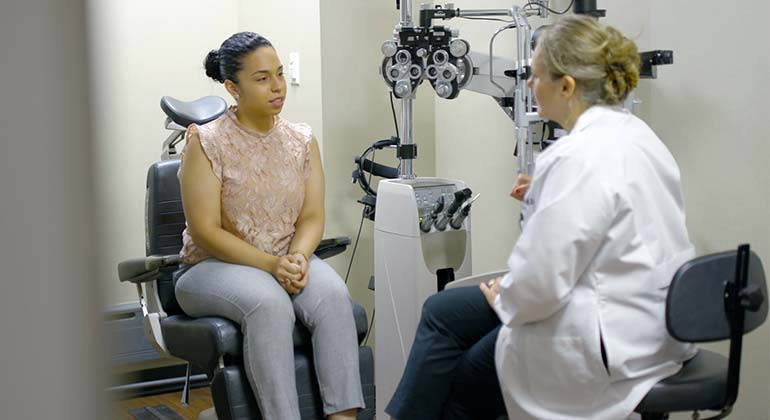The Pros and Disadvantages of Various Refractive Surgeries for Improved Eyecare

LASIK Surgical Treatment
LASIK surgical treatment is a generally done refractive procedure that intends to remedy vision concerns such as farsightedness, astigmatism, and nearsightedness. During the treatment, a thin flap is produced on the cornea, and a laser is utilized to reshape the underlying cells, fixing the refractive mistake.
One of the key benefits of LASIK surgical procedure is the quick renovation in vision experienced by lots of patients. Most people notice a considerable improvement in their sight quickly after the procedure, with minimal downtime needed for recovery. Additionally, LASIK is understood for its high success rate and low incidence of problems when carried out by knowledgeable doctors. However, like any type of medical procedure, LASIK likewise carries some threats, consisting of completely dry eyes, glare, halos, and under or overcorrection of vision. It is important for people considering LASIK surgery to undergo a comprehensive examination by an eye care specialist to establish if they are ideal prospects for the procedure.
PRK Procedure
The PRK treatment, also known as Photorefractive Keratectomy, is a kind of refractive surgery that aims to remedy vision concerns similar to LASIK surgical treatment. Unlike LASIK, which includes developing a flap in the cornea, PRK functions on the surface area layer of the cornea.
One of the advantages of PRK over LASIK is that it eliminates the danger of flap-related issues considering that no flap is created throughout the surgical treatment. This can be helpful for people with slim corneas or those involved in contact sports where eye trauma is a possibility. The healing time for PRK is generally much longer contrasted to LASIK, as the outer layer of the cornea needs time to regrow after the procedure. Despite the longer healing period, PRK can be an ideal alternative for people seeking vision adjustment surgery.
SMILE Surgical Procedure
An advanced refractive surgical procedure method obtaining popularity in the area of ophthalmology is SMILE Surgical procedure. Tiny Incision Lenticule Extraction (SMILE) is a minimally intrusive treatment that deals with vision by reshaping the cornea utilizing a femtosecond laser. Unlike typical LASIK surgical treatment, SMILE Surgical procedure includes creating a small laceration in the cornea to remove a lenticule, which causes much less disturbance to the corneal structure and potentially much faster recovery times.
Among the primary advantages of SMILE Surgery is its ability to deal with nearsightedness (nearsightedness) and astigmatism with high precision, bring about excellent visual outcomes for clients. The minimally intrusive nature of the procedure also decreases the danger of problems such as completely dry eye disorder, making it a desirable choice for people looking for refractive surgery.

LASEK Technique
Having discovered the advantages and considerations of SMILE Surgical procedure, one more noteworthy refractive surgical procedure strategy worth analyzing is the LASEK Method. LASEK, which stands for Laser-Assisted Subepithelial Keratectomy, is a kind of laser eye surgery that intends to correct refractive errors such as nearsightedness (nearsightedness), hyperopia (farsightedness), and astigmatism.
Unlike LASIK, LASEK does not involve developing a corneal flap. Rather, during a LASEK treatment, the surgeon utilizes a diluted alcohol solution to loosen the thin external layer of the cornea, recognized as the epithelium.
One of the primary advantages of LASEK is that it can be suitable for individuals with thin corneas that might not be excellent candidates for LASIK. In addition, LASEK generally results in minimal post-operative discomfort and a quicker recovery time contrasted to PRK. However, the aesthetic recuperation process with LASEK might be slightly longer than with LASIK.
Implantable Contact Lenses
Implantable Get in touch with Lenses supply a long-lasting vision modification solution for people looking for a choice to traditional call lenses or glasses. These lenses, likewise referred to as phakic intraocular lenses, are surgically inserted right into the eye to remedy refractive errors such as nearsightedness (nearsightedness), hyperopia (farsightedness), and astigmatism. andalusia pediatrics. Unlike typical call lenses that remain on the surface of the eye, implantable call lenses work within the eye itself, providing clear vision without the need for everyday upkeep or removal
Among the key benefits of implantable call lenses is their permanence. Once inserted, they can continue to be in the eye forever, offering constant and stable vision improvement. Furthermore, these lenses can be an outstanding option for individuals who article are not great prospects for laser eye surgical treatment or who like a reversible vision adjustment procedure.
However, implantable get in touch with lenses do lug some risks, including the potential for cataracts or boosted eye pressure. It is essential for people considering this option to speak with an eye care expert to determine if implantable get in touch with lenses are the ideal selection for their certain needs and eye health and wellness.
Final Thought
In verdict, each kind of refractive surgical procedure has its own benefits and downsides. LASIK surgery is popular for its fast recuperation time, while PRK treatment might be suitable for individuals with thin corneas.

On The Whole, SMILE Surgery provides click an encouraging alternative for individuals looking to improve their vision via refractive surgical treatment.